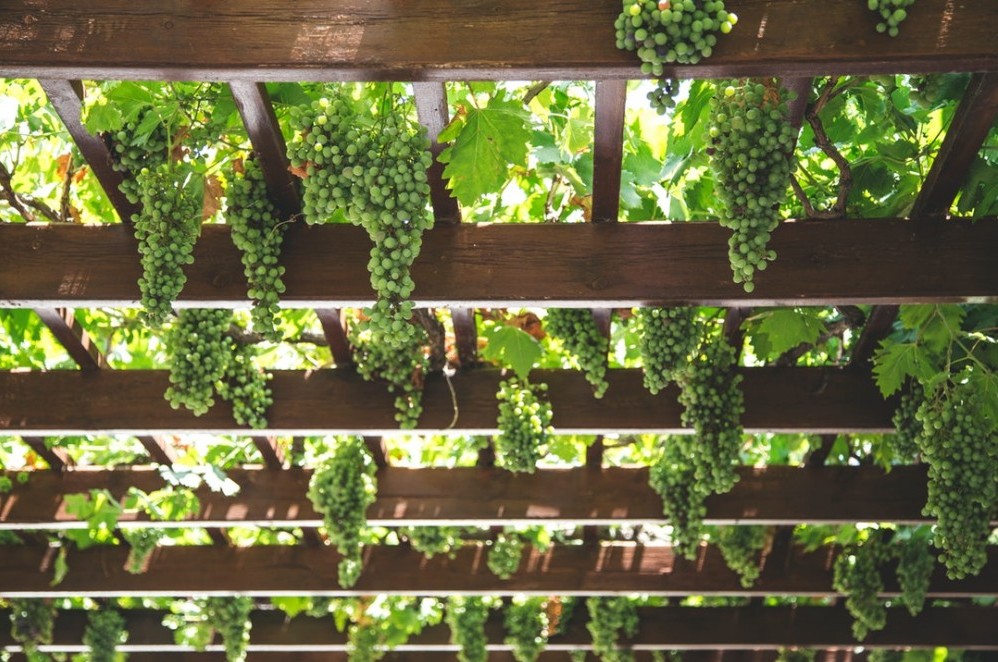Grapes are a multi-use fruit for jams, baked goods, wine, and eating fresh off the vine. So, it’s essential to know how to grow grape vines. With their ability to grow in a lot of places around the world, they are an excellent choice for any garden.
How to Grow Grape Vines Regarding a Type of Grape
Each grape grows more excellently in various areas and offers several appearances and flavors. There are three common types of grapes: Muscadine, European, and American grapes. American vines grow best in sunny, warm climates like, for example, that of central California. European grapes are common in Northern parts of the US and, of course, in Europe. Muscadine grapes are regularly found in the Southern US.
- Each type of grapevine has various species to choose from, which offer up their color, flavor, size, and texture. Visit a regional
garden center to find one that fits your environment and needs. - Select plants that look strong and healthy and which are one year old. Get them guaranteed virus-free to ensure that their average growth is sustained.
- Look for plants whose canes are well-formed and that have a regular root distribution.
Prepare Your Grapevine Cuttings
If you or your friend has another grapevine you wish to plant from, you can take a cutting and transplant it in a different location.
To use your cuttings: Cut the piece straight from the vine or from the freshly pruned brush. It’s necessary that the cutting has three nodes(the nodes look similar bumps). The lower part of the cutting is cut at an angle. This cut should be 45 degrees and 1/4 to 1 inch above the node.
- When using cuttings, plant as many as reasonable – in as many places as possible – to have a more significant chance of profit. You can give all the surplus plants to your friends.
Select a Suitable Location
Think about location when you are thinking about how to grow grape vines. Grapevines are long-lived plants. It’s quite normal that live between 40 and 100 years. Consequently, ensure that the position you select is a changeless one that will give up plenty of room for coming grapevines. Grapevines succeed in sloped and hilly regions that offer lots of drainage and sunshine. If it’s reasonable, plant your grapevines on a descending slope on a south-facing slope in a section free of large plants or trees.
- In cold areas, ensure to plant the vines in the sunny territory, preferably facing south. A southern-facing location will probably stop frost-nipping the vines. Also, keep away from “frost pockets,” such as the base of a slope or low-lying areas, where cold air can ruin and pool a crop.
- Pay attention if you live in the Southern part of the earth. Here the situation is just the opposite.
Prepare the Soil
Grapevines are quite demanding about their soil conditions, so ensure that your soil conditions are suitable for planting. Use soil that is somewhat sandy or rocky. The desired pH has to be just above 7. Improve the ground to encourage normal drainage if needed, as water-logged roots are not the best for good-growing grapevines.
- For best results, take a soil sample to an agricultural extension service or soil measurement laboratory for a complete soil analysis. This is commonly free or not too expensive. Of course, you can do this at home also. You can test the soil pH with an at-home kit. You can also add pH adjusters to your soil if required.
- It may look strange, but grapevines do not like hugely nutrient-rich soil. Avoid massively treated soil when feasible, and follow instructions from a skilled local grower or soil test result.
Prepare a Trellis for Your Grapevines
You can assume from the name that vine plants rise upwards along a support construction. So construct or purchase a trellis for them to grow along. This construction is typically a wooden composition produced by intertwined boards, and this is what enables the vines to wrap around them, giving a stable support mode.
- Wire and latticed wood can be bought and connected to fence posts for a natural homemade trellis, especially if you don’t have the ability or funds to purchase or build your own.
- A single stake is not strong enough (it’s strong enough for tomato plants but not for vines). For sure, this won’t give enough support for your vines, especially once they begin growing.
Know When to Plant
Don’t hurry with the grapevine planting. Wait till a frost-free day in early spring or late winter. Remember that pruning should also be done in the same period in future years. If you aren’t sure, ask your local agricultural assistant for the correct planting days.
